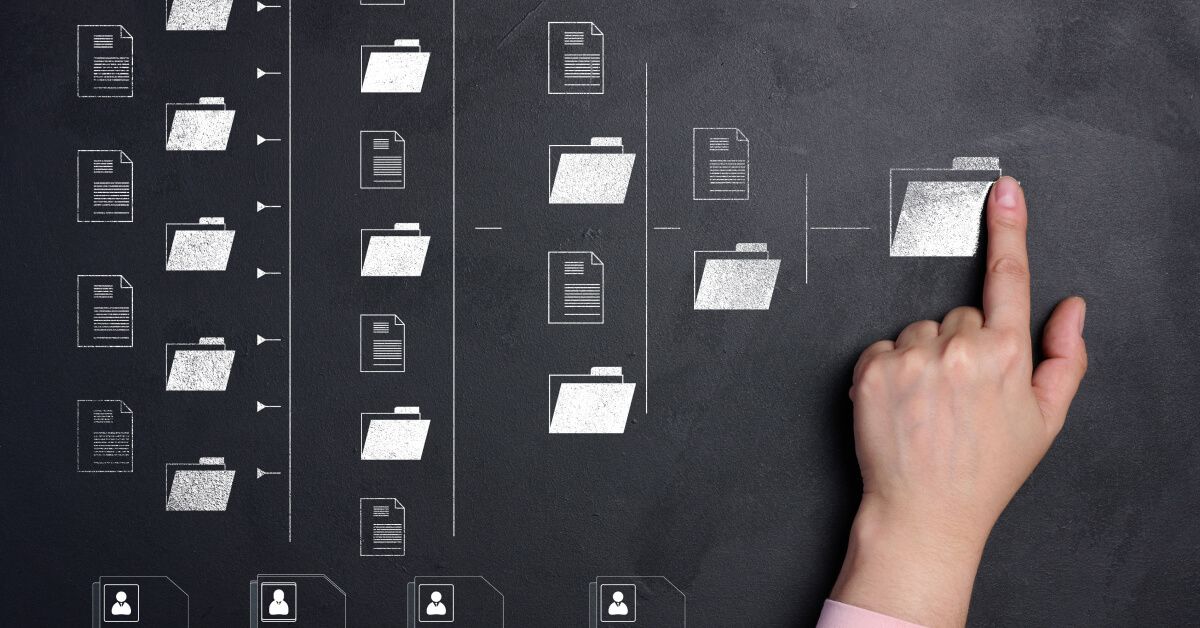Employee classification and its impact on payroll, benefits, and performance reviews

Imagine hiring a freelance designer for a three-week project. They finish early, and you’re thrilled—until payroll tries to run them through your benefits system, HR asks if they’re due for a performance review, and Finance wants to classify their hours as “part-time.” Chaos. All because no one agreed on what kind of worker they actually were. Welcome to the wild world of employee classification, where one wrong label can throw your entire system out of sync.
From full-timers with flexible schedules and freelancers to seasonal staff and interns, today’s workforce isn’t a neat little box—it’s more like a Rubik’s cube. You shift one thing, and everything else has to realign. And when roles blur, so do payroll, benefits, and performance management.
As an employer, getting the classification of employees right isn’t just a paperwork exercise—it’s legal compliance, cultural clarity, and a surefire way to avoid lawsuits and tax nightmares. Yet, with so many employment types and worker groups, it’s easy to slip up without proper legal or tax advice.
In this blog, we’re breaking down every label, rule, and risk you need to know. Understanding the types of staff you hire is just as important as hiring them in the first place for most employers. Let’s make work labels make sense again, especially in terms of wage and hour regulations.
What is employee classification?

Employee classification refers to the process of categorizing workers based on their job roles, responsibilities, and relationship with the company. It helps define the rights, benefits, and obligations each worker is entitled to—and determines how they’re managed within the organization.
From income tax and payroll taxes to state wage considerations, overtime eligibility, and healthcare coverage, classification plays a foundational role in federal wage regulations, employment law, and HR operations.
At its core, employee classification answers key questions: Is this person a full-time employee or a contractor? Are they exempt from overtime or not? Are they part-time, seasonal, or temporary?
These distinctions aren’t just HR semantics—they influence everything from how much you pay someone to whether they are considered nonexempt, how you schedule their hours, review their performance, and ensure compliance with wage and hour laws.
Misclassifying workers can lead to serious consequences, such as tax penalties, unpaid overtime claims, and compliance issues with labor laws. That’s why HR professionals, legal teams, and payroll departments rely on well-defined employment categories, including those that meet minimum wage requirements, to ensure clarity and consistency.
It’s also important to understand that the classification of employees isn’t a one-size-fits-all approach. With hybrid work, gig roles, and evolving job structures, the way you define roles today might look very different from five years ago. As your workforce diversifies, including part-time employees, staying sharp on employment type distinctions helps you stay compliant and avoid headaches later.
Importance of employee classification
Getting employee classification right isn’t just about ticking legal boxes—it’s about protecting your business, your people, and your bottom line. When done correctly, it creates smoother operations, better workforce planning, and fewer surprises related to unpaid wages and public safety during audits or legal reviews.
- Legal compliance: Proper classification helps both the employee and the company stay compliant with federal, state, and local labor laws. Employment laws clearly define how different employment types must be treated, including the salary basis —missteps here can lead to audits, lawsuits, or large penalties. By classifying your workforce correctly, you protect your business from costly legal consequences.
- Payroll accuracy: Classification directly impacts how workers are paid, taxed, and documented, especially when applying the job duties test. Whether it's hourly wages, salary, overtime, or withholding taxes, getting it wrong can result in payroll errors or even underpayment. A clear system for classification of employment ensures every employee is compensated accurately and fairly for the work performed.
- Benefit eligibility clarity: Most employee benefits—like health insurance, paid leave, and retirement plans—depend on an individual’s classification. A full-time employee often receives a different benefits package than a part-time or contract worker, which may depend on passing the salary level test. Clear classification avoids confusion, reduces disputes, and ensures fair access to perks based on defined employment categories.
- Performance management alignment: How you evaluate a full-time employee’s work is very different from how you assess a freelancer or seasonal hire. Classification ensures you apply the right expectations, goals, and review cycles to each worker, respecting the worker's control over their work process. It helps streamline performance management systems and reduces friction during evaluations, particularly over a specified period.
- Workforce planning: Having clear visibility into the types of staff you employ helps you plan for the future. Whether you’re budgeting for new roles, planning project teams, or adjusting headcount, knowing your mix of full-time, part-time, and temporary employees and having a specified number for each category makes decision-making more strategic and data-backed.
- Risk reduction: Misclassifying someone as an independent contractor when they function like an employee can open the door to legal trouble. This includes back pay claims, unpaid benefits, and government investigations that can lead to significant penalties. Accurate classification of employees acts as a protective layer against unnecessary financial and legal risks for those who are economically dependent.
- Cultural consistency: Clear classification creates transparency about expectations, responsibilities, and benefits. When workers understand their role and how they fit into the larger structure, it strengthens communication and trust. Especially in hybrid or remote environments, this consistency supports a healthier, more connected company culture, particularly when workers bring specialized skills to the table.
Mistakes in employee classification and how to avoid them

Employee classification might seem straightforward, but one wrong label can cause legal, financial, and cultural ripple effects across your organization. Here are some of the most common missteps, according to the final rule, and how to steer clear of them before they snowball into bigger problems.
- Misclassifying contractors as employees: Treating an independent contractor like an employee—assigning fixed hours, tools, or long-term responsibilities—can trigger tax issues and legal claims. To avoid this, review the IRS’s control test and ensure contractors truly operate independently from your management structure, as opposed to being treated like volunteer work.
- Confusing exempt and non-exempt status: Exempt employees aren’t eligible for overtime, while non-exempt employees are. One common mistake is assuming all salaried workers are exempt. Use the Fair Labor Standards Act (FLSA) duties test to confirm the right classification before you decide on their pay model.
- Overlooking role changes: Employees often evolve in their responsibilities, but their classification doesn’t always follow suit. A part-timer may become full-time, or a contractor might begin working like staff. Regularly audit your workforce and update employment type based on actual job duties and hours.
- Ignoring state-specific rules: Classification laws vary across states, especially for gig workers and interns. What qualifies as a contractor in Texas may not in California. Always cross-check state wage regulations when hiring remote or multi-state employees to ensure employment classification accuracy.
- Lumping all non-permanent workers together: Temporary, on-call, seasonal, and contract workers serve different functions and follow different rules. Failing to distinguish between these types of employees can lead to payroll, benefits, and compliance complications. Use clear criteria to define each group appropriately.
- Assuming interns are unpaid by default: Not all internships qualify as unpaid. If interns are doing real work that benefits the business, they may be entitled to pay under labor laws. Follow the Department of Labor’s guidelines or risk violating minimum wage and hour laws for this employment category.
- Lack of documentation: Many classification mistakes happen because job roles aren’t clearly defined or updated. Without proper contracts or offer letters, your company could default to incorrect assumptions. Maintain accurate records that outline each worker’s role, schedule, and classification to avoid confusion.
Types of employees
Knowing the different types of employees isn’t just helpful—it’s essential for compliance, payroll, and managing performance expectations. Each category comes with unique responsibilities, rights, and regulations. Here's how to break them down:
- Full-time employees: These employees usually work 35 to 40 hours a week and are eligible for company benefits like health insurance, paid leave, and retirement plans. They’re the backbone of most businesses and are typically salaried. This employment type also comes with job stability and formal performance evaluations.
- Part-time employees: Part-time staff work fewer hours than full-timers—often under 30 hours per week. They're commonly paid hourly and may not always receive full benefits. Employers must clearly define this classification of employees to ensure proper scheduling, tax withholding, and benefits eligibility.
- Temporary employees: Temps are hired for a specific period or project, often through staffing agencies. They’re great for filling short-term gaps without committing to long-term employment. Despite their brief tenure, this work classification still requires accurate time tracking and legal compliance.
- On-call employees: These workers aren’t scheduled for fixed hours but must be available when needed. Common in healthcare, hospitality, and retail, on-call employees sit in a grey zone of availability and compensation. Employers must manage expectations and compliance closely with this type of staff.
- Independent contractors: Unlike employees, contractors are self-employed and usually hired for specialized tasks or projects. They set their own hours, use their own tools, and don’t receive benefits. This employment category must be carefully managed to avoid misclassification and potential legal exposure.
- Contract employees: Often confused with independent contractors, contract employees work under fixed-term agreements but are usually on the company payroll. They may get some benefits and work closely with teams, but their contracts outline start and end dates. Their employment type blends structure with flexibility.
- Seasonal employees: These workers are hired during peak business periods, like holidays or summer. They're often part-time or temporary and usually not eligible for long-term benefits. Seasonal staff fall into a distinct employment classification that's driven by demand cycles.
- Volunteers: Volunteers offer their time without expectation of compensation, often for nonprofits or social causes. While they’re not employees in the legal sense, there are still boundaries around what tasks they can perform. Employers must ensure volunteers don’t drift into misclassified worker groups.
- Exempt employees: Exempt employees are not eligible for overtime under the Fair Labor Standards Act (FLSA). They’re typically salaried and hold executive, administrative, or professional roles. Misclassifying someone as exempt can lead to serious back pay claims, so employers must apply the right employment classification.
- Interns: Interns are usually students or recent grads looking for work experience. Some are paid, others are unpaid, depending on how closely their role meets educational guidelines. Interns occupy a unique employment type, and proper classification is critical to avoid violating wage laws.
Employee vs contractor vs intern: Key differences in classification

Not all workers on your team follow the same rules or come with the same responsibilities for the employer. Whether someone is an employee, contractor, or intern can impact taxes, benefits, and legal obligations. Here's a breakdown of how these employment types compare, particularly in terms of a fixed number of hours or pay.
| Feature | Employee | Contractor | Intern |
|---|---|---|---|
| Employment relationship | Direct hire, on payroll | Self-employed, hired for specific tasks | Temporary, often part of a learning program |
| Supervision & control | Employer controls schedule and duties | Contractor controls how and when they work | Supervised, but with learning objectives |
| Tax withholding | Employer withholds taxes | Responsible for their own taxes | Depends—if paid, the employer may withhold |
| Benefits eligibility | Usually eligible for company benefits | Not eligible for benefits | Rarely eligible unless treated as an employee |
| Pay structure | Salaried or hourly | Paid per project or contract terms | Paid or unpaid, depending on the arrangement |
| Duration | Ongoing, indefinite | Fixed-term or project-based | Short-term, aligned with education/career |
| Legal protections | Covered under labor laws | Limited protections as independent workers | Protected if classified as an employee |
Exempt vs. Non-exempt employees
Misclassifying employees as exempt or non-exempt can lead to compliance issues, legal risks, and complications in payroll. Here’s a breakdown:
| Feature | Exempt employees | Non-exempt employees |
|---|---|---|
| Overtime eligibility | Exempt employees are not entitled to overtime pay, regardless of hours worked beyond their standard schedule. | Non-exempt employees must receive overtime pay (typically time-and-a-half) for hours worked over 40 hours per week. |
| Salary requirements | Exempt employees must meet a minimum weekly salary threshold, ensuring they are paid on a fixed salary. | Non-exempt employees are often paid hourly or salaried, without a required minimum salary threshold for overtime. |
| Job roles | Exempt roles are typically executive, administrative, or professional jobs that require independent judgment. | Non-exempt roles often include operational, clerical, and service jobs that are governed by strict labor regulations. |
| FLSA coverage | Exempt employees are not subject to the Fair Labor Standards Act’s (FLSA) overtime pay provisions. | Non-exempt employees are covered by FLSA and are entitled to overtime pay, regardless of job type. |
| Work hours tracking | Exempt employees are generally not required to track work hours, as they receive a fixed salary. | Non-exempt employees must track their work hours to ensure proper payment for overtime and adherence to labor laws. |
| Pay basis | Exempt employees are typically salaried, meaning they are paid a consistent amount regardless of hours worked. | Non-exempt employees are usually paid hourly, with pay reflecting the number of hours worked, plus overtime if applicable. |
| Legal risk if misclassified | Misclassifying an employee as exempt can lead to back pay claims, penalties, and potential legal action. | Misclassifying a non-exempt employee can result in fines, back pay for overtime, and penalties for non-compliance. |
Impact of incorrect employee classification on payroll and benefits

Classifying employees incorrectly can have serious consequences for both the employer and the employee, especially in areas like payroll, benefits, and legal compliance. The classification of employment types determines overtime eligibility, benefits entitlement, tax obligations, and more. Here’s how mistakes in employee classification can cause problems:
- Overtime pay violations: If non-exempt employees are misclassified as exempt, they won't receive overtime pay for hours worked over 40 per week. This leads to underpayment and potential wage claims, as well as a breakdown of compliance with labor laws.
- Missed benefits eligibility: Incorrectly classifying employees can also mean they miss out on key benefits. For example, part-time or temporary workers might be denied health insurance or retirement plans, leading to dissatisfaction, disputes, and legal issues with worker groups.
- Tax implications: Misclassifying workers as contractors when they should be employees could lead to tax issues. Employers may fail to withhold the proper income taxes, and workers may be left responsible for paying self-employment taxes, which can trigger audits and penalties.
- Fines and penalties: The IRS, Department of Labor, and other regulatory agencies may impose fines and penalties for incorrect classification of employees. These penalties can be significant, not just financially, but also reputationally, as non-compliance damages trust in the company.
- Employee discontent and legal disputes: Misclassification often causes frustration among employees who feel they have been denied rightful pay or benefits. This can lead to legal claims and disputes, hurting morale and creating a toxic work environment.
Employee classification for remote and hybrid work models
The rise of remote and hybrid work models has added complexity to employee classification, requiring organizations to carefully distinguish between various employment types.
With workers spread across different locations and schedules, it’s crucial to ensure that each worker is properly classified according to their work arrangement. Misclassifying these employees can lead to compliance issues, tax complications, and missed benefits, which the employee depends on. Here's how to approach classification for remote and hybrid workers:
Remote Employees
Remote employees, whether full-time or part-time, often face challenges when it comes to the classification of employees. These workers typically have flexible work hours and perform tasks from home or other remote locations. However, their classification—whether exempt or non-exempt—still follows the same standards as on-site employees.
They are entitled to the same rights regarding overtime pay, benefits, and taxes. Employers must ensure that these employees receive proper training on timekeeping and compensation policies to avoid misclassification. Additionally, remote workers must be given the same level of access to benefits and opportunities as their in-office counterparts, such as health insurance, paid time off, and retirement plans.
Hybrid employees
Hybrid employees, who split their time between the office and remote work, require careful employee classification because they may face unique challenges regarding work hours and location-based benefits. While they might work more hours from home, employers must ensure that these employees are still categorized correctly based on their job duties and responsibilities.
For example, a hybrid worker in an exempt role should still receive a fixed salary regardless of whether they are working from home or the office. It’s crucial to track hybrid employee hours accurately to determine their eligibility for overtime and other benefits based on their employment type.
Link between employee classification and company culture

The way employees are classified can have a significant impact on the overall company culture, shaping employee engagement, morale, and work dynamics. Proper classification of employees ensures fair treatment and aligns with the company’s values.
Misclassifications can lead to dissatisfaction, confusion, and a negative work environment, which affects how employees feel about the organization. Here’s how classification directly influences company culture:
1. Employee engagement and trust
When employees are properly classified, they feel valued and recognized, which boosts their engagement. Proper classification shows that the company respects the labor laws and treats employees equitably, fostering a culture of trust.
Employees who feel they are fairly compensated and correctly classified are more likely to be motivated, show up for work with enthusiasm, and participate actively in workplace initiatives.
2. Clear expectations and role understanding
Proper employee classification sets clear expectations for both the employer and the employee. When workers know whether they are exempt or non-exempt, part-time or full-time, they have a better understanding of their roles and responsibilities.
This clarity reduces ambiguity and confusion, leading to smoother communication, increased productivity, and a more organized work environment. It also allows employees to focus on their tasks without worrying about pay discrepancies or benefit eligibility.
3. Team collaboration and inclusivity
Classifying employees based on their roles and work arrangements helps ensure that everyone is treated fairly, regardless of whether they are remote, part-time, or full-time.
This inclusivity fosters a sense of belonging and teamwork, as employees feel they are being recognized for their contributions. When employees are confident in their roles and classification, including their contributions towards social security, they are more likely to collaborate and contribute to a cohesive company culture.
4. Conflict resolution
Misclassification can breed resentment, misunderstandings, and frustration among employees. Workers who are misclassified might feel undervalued or exploited, leading to dissatisfaction and potential disputes. A culture based on fairness and respect, where employees are correctly classified, reduces these conflicts.
Transparent classification helps prevent potential grievances related to compensation, benefits, or working hours, creating a more harmonious workplace where employees feel heard and respected.
5. Impact on leadership and managerial styles
Leaders and managers play a significant role in shaping the company culture. When managers are clear on the classification of their team members, they can provide more effective leadership, ensuring the right policies are in place and that employees’ needs are met.
A manager who understands the rights and limitations of each worker group will be better equipped to handle diverse team dynamics, resolve issues, and provide mentorship, all of which strengthen the company culture.
What to include in an employee classification policy?
An employee classification policy outlines how an organization classifies its workforce, ensuring clarity, legal compliance, and fairness. It provides guidance on distinguishing between various employee categories, ensuring both employers and employees are on the same page. Here are the key elements that should be included in such a policy:
- Clear definitions of employment types: The policy should provide clear definitions for each employment type, such as full-time, part-time, temporary, and contract workers. These definitions ensure there is no confusion about employee status and eligibility for benefits, rights, and responsibilities. Each category should be aligned with legal and organizational requirements, so employees understand their specific status within the company.
- Criteria for classification: The policy should outline the criteria used to classify employees. This includes factors like work hours, job duties, pay structure, and benefits eligibility. Providing specific criteria helps prevent errors and misunderstandings about classification, ensuring that all employees are treated fairly and consistently across the organization.
- Exempt vs. non-exempt status: An important aspect of the policy is clarifying which employees are exempt and which are non-exempt, particularly in relation to overtime pay. The policy should specify the rules for determining whether an employee is entitled to overtime or whether they are salaried and exempt from overtime. This helps prevent costly mistakes and ensures compliance with labor laws.
- Guidelines for contract and freelance workers: For organizations that engage contract or freelance workers, the policy should provide guidelines for classifying these workers. This ensures that these individuals are not misclassified as employees and helps protect both the organization and workers from potential legal issues. Clear definitions of contractor vs. employee statuses are crucial.
- Benefits and compensation eligibility: The policy should explain how employee classification impacts eligibility for benefits and compensation. It should outline which benefits apply to each employee type, such as health insurance, vacation days, or retirement plans. Clear guidelines on compensation and benefits based on classification help prevent any potential employer confusion or resentment among employees.
- Employment status for remote or hybrid workers: The policy should also address how remote or hybrid workers are classified. As remote and hybrid work becomes more common, it's essential to clarify whether these employees are treated differently from in-office staff. Proper classification ensures these employees receive the correct pay, benefits, and treatment in line with their roles.
- Compliance with labor laws: The policy should outline how the organization complies with relevant labor laws and regulations regarding employee classification. This includes adhering to federal, state, or local laws that define employee categories, wages, benefits, and more. Ensuring compliance with legal requirements helps protect the company from legal risks related to misclassification.
- Review and updating process: An effective employee classification policy should include a process for periodic review and updates. As laws, regulations, and the workforce evolve, the policy must be flexible enough to accommodate these changes. Regular reviews ensure that the classification system stays relevant and compliant with any legal or organizational shifts.
How to deal with a complex workforce?

Managing a complex workforce requires a clear understanding of diverse employee needs, roles, and classifications. With multiple employment types, varying work schedules, and unique expectations, it’s essential to implement strategies that ensure all employees feel valued and aligned with company goals. Here’s how to manage a diverse workforce effectively:
- Implement clear classification systems: A clear and consistent employee classification system is essential for managing a complex workforce. By defining full-time, part-time, remote work, contract, and freelance workers, you ensure each employee's status is understood. This transparency prevents confusion regarding pay, benefits, and expectations, allowing managers to handle employee needs with clarity and fairness.
- Foster inclusive communication: Effective communication plays a critical role in managing diverse teams. Develop inclusive communication channels that cater to different working styles, whether remote, hybrid, or in-person. By keeping communication open and transparent, you create informed employees.
- Provide tailored support and development: A one-size-fits-all approach doesn’t work for a diverse workforce. Offer tailored support and professional development based on employees' roles and employment types. Whether it’s career development for full-time staff or specific resources for remote workers, personalized support keeps employees engaged and motivated.
- Leverage technology for management efficiency: Using workforce management software can significantly streamline operations, especially when dealing with a complex workforce. These tools can help track employee hours, benefits eligibility, and performance across different classifications, reducing administrative burdens.
- Regularly reassess classification and policies: Workforces are dynamic, and so are the roles and employment types that make up your team. Regularly reassess employee classifications, policies, and benefits to ensure they are still relevant and legally compliant.
Significance of employee feedback tools in understanding employees’ voices
Employee feedback tools are critical for gaining insight into employees' thoughts and concerns, which helps organizations improve their work environment. These tools provide structured platforms to collect feedback and make data-driven decisions. Here's why these tools are essential for understanding employees’ voices:
- Real-time feedback collection: Employee feedback tools offer the advantage of real-time data collection, allowing employers to quickly identify emerging issues. This proactive approach helps address concerns before they escalate, ensuring that employees feel heard and valued. It creates a responsive environment where employees’ voices have an immediate impact.
- Increases engagement: When employees know their feedback is actively sought and acted upon, they feel more engaged and connected to the organization. This sense of involvement enhances job satisfaction and can lead to better retention rates. Engaged employees are more likely to be productive and loyal to the company.
- Improves decision-making: Feedback tools provide a wealth of information that can be used to make informed decisions across various departments. Whether it’s about workplace policies, leadership effectiveness, or team dynamics, data-driven decisions lead to outcomes that align more closely with employees’ needs and preferences.
- Identifies areas for improvement: Regular use of feedback tools helps organizations identify recurring issues or areas of dissatisfaction. By tracking employee sentiment, employers can pinpoint specific areas for improvement, such as communication gaps or leadership concerns. Addressing these issues early on helps prevent long-term problems.
- Promotes a positive culture: Using feedback tools fosters a culture of transparency, openness, and trust. When employees see that their feedback results in positive changes, it builds mutual respect between staff and management. This contributes to a work environment where employees feel empowered to share their thoughts and contribute to the organization’s success.
Conclusion
Employee classification plays a crucial role in ensuring proper payroll management, compliance with laws, and maintaining a harmonious work environment. By correctly classifying employees, organizations can avoid costly mistakes and foster a culture of fairness and transparency. Regular use of employee feedback tools can enhance engagement and decision-making, while also providing valuable insights into areas needing improvement.
As businesses adapt to new work models, clear policies and effective classification systems are more important than ever. To streamline your employee classification and feedback processes, consider using CultureMonkey. This platform helps organizations gather real-time feedback, track employee sentiment, and improve overall team engagement, creating a more connected and productive workforce.
Summary
FAQs
1. What criteria are used to determine whether an employee is exempt or non-exempt?
Exempt employees are typically salaried, perform executive, administrative, or professional duties, and meet specific income thresholds. Non-exempt employees are usually hourly and entitled to overtime pay. Classification depends on job duties, salary level, and industry standards. Misclassification can lead to unpaid overtime claims and fines, making correct classification crucial.
2. How does employee classification impact overtime pay?
Non-exempt employees are entitled to overtime pay, typically 1.5 times their regular rate, for hours worked beyond 40 in a week. Exempt employees, however, are not eligible for overtime pay regardless of hours worked. Proper classification ensures compliance with labor laws and prevents financial penalties, ensuring employees are paid correctly for extra hours worked.
3. Can an employee switch from contractor to full-time status?
Yes, an employee can switch from contractor to full-time status, but this requires a formal change in their employment classification. This transition involves adjusting their benefits, payroll status, tax withholding, and eligibility for company programs based on their worker classification. HR must ensure the transition follows legal requirements for benefits and taxation to avoid misclassification and ensure proper compliance.
4. How can HR ensure compliance with employee classification laws?
HR can ensure compliance by staying updated on labor laws and regularly reviewing employee roles and job duties. Proper documentation of each employee’s classification and consistent auditing help maintain accurate classifications. Training HR teams on classification guidelines and consulting legal experts when needed can prevent costly mistakes and ensure proper compliance with employee classification laws.
5. What are the legal risks of misclassifying an employee as a contractor?
Misclassifying an employee as a contractor can lead to severe legal risks, including fines, back pay for overtime, and unpaid benefits like health insurance. It can also result in penalties from labor authorities and damage to a company's reputation. Employers must ensure contractors meet IRS and state criteria to avoid misclassification and potential legal consequences.



